Navigation
Install the app
How to install the app on iOS
Follow along with the video below to see how to install our site as a web app on your home screen.
Note: This feature may not be available in some browsers.
More options
You are using an out of date browser. It may not display this or other websites correctly.
You should upgrade or use an alternative browser.
You should upgrade or use an alternative browser.
The Bacterial “Rip Clean” Method
- Thread starter sixty_reefer
- Start date
- Tagged users None
Not sure about set in stone. On Sunday night, I sent an email request to TM corporate office and on Monday morning a sales manager for TM USA give me an inventory count. On Monday morning inventory was 62 units of 60g and 40 units of 100g.Anybody get a set in stone 2 week agreement from aquacave or anybody else on re up? Maybe TM could answer this?
Where do you guys get your reef actif? I'm looking online and everyone is sold out, or it says they discontinued it.Dosing has to be done manually, reef actif is in powder form and will have to be mixed with tank water and agitated to mix. It can’t be done via dosing unit unfortunately. I prefer to dose it at lights out although you could dose it at any time really the advantage of dosing at light out is to reduce it from being used by photosynthetic organisms.
the amount varies with volume the introduction says a full scoop per 132 gallons tree times a week, I just divide my full amount and do it daily.
the first sign that it’s working would be glass maintenance you should observe less green algae forming on the glass hence less glass maintenance, in time you should observe the Cyanobacteria receding naturally and starting to melt, with the GHA you will see it turning brown.
What is shelf life and at what temperature is best for storage?I think the 60 grams is ok for folks that just want to try it out, for a continuous dosing the 300 grams (uk is 60$) seems be the better alternative economically as you get 5 times the 60 grams. At minimum dosage the 300g will give 100 weeks, just 4 weeks short of 2 years supply on a 132 gallon or one full year at 2 spoons per week and if it reduces the need for GAC it probably end up not doing much different in the year budget.
sixty_reefer
5000 Club Member
View BadgesArticle Contributor
UK Reef Club Member
Hospitality Award
R2R Research
I just looked under both of mine and I can only see a smudge of the best of date. My last one lasted me 6 months with no issues. Maybe someone from TM could chime in, being a dry carbohydrate I would imagine a fairly long shelf life at room temperature.What is shelf life and at what temperature is best for storage?
sixty_reefer
5000 Club Member
View BadgesArticle Contributor
UK Reef Club Member
Hospitality Award
R2R Research
Where do you guys get your reef actif? I'm looking online and everyone is sold out, or it says they discontinued it.
have you tried the preferred dealer stores locator?
This is a very important product for us. It is not being discontinued. You will find it available in many places. All of oyur Tropic MArin Preferred Dealers should have the product available for you. Here is a link tot he Preferred Dealer Store Locator. I hope this helps...

Preferred Dealers
Many stores throughout the US carry Tropic Marin products, but our Preferred Dealers carry a larger selection of our line and are also using Tropic Marin in their store systems. Some of the...www.tropicmarin-usa.com
it not the most popular product although it seems that they are about somewhere
Not sure about set in stone. On Sunday night, I sent an email request to TM corporate office and on Monday morning a sales manager for TM USA give me an inventory count. On Monday morning inventory was 62 units of 60g and 40 units of 100g.
@sixty_reefer
Lets talk bacteria that live inside of various filter feeders with special emphasis on cryptic sponges.
@Timfish, this is your speciality.
I have some first hand knowledge about carbon dosing used by bioflock shrimp farms. Seven years ago, while visiting Texas A&M Maraculture Research Facility at Flour Bluff. Professor Tzachi comented on the insistance of consultants throwing more carbon at shrimp, afterwhich he showed me raceways with massive gas exchange to support 10K pound harvest. Not until reading about the cryptic sponge loop did I realize that DIC produced by cryptic sponges is carbon dioxide. In effect carbon dioxide plus photosyntethis becomes glucose which is carbon.
The function of the biofloc is to reduce the nitrogenous metabolic waste (ammonia, nitrite) produced by shrimp feeding and production. Ammonia consumed by heterotrophic bacteria becomes protein, which can then be consumed by shrimp and converted into growth.
Lets talk bacteria that live inside of various filter feeders with special emphasis on cryptic sponges.
@Timfish, this is your speciality.
I have some first hand knowledge about carbon dosing used by bioflock shrimp farms. Seven years ago, while visiting Texas A&M Maraculture Research Facility at Flour Bluff. Professor Tzachi comented on the insistance of consultants throwing more carbon at shrimp, afterwhich he showed me raceways with massive gas exchange to support 10K pound harvest. Not until reading about the cryptic sponge loop did I realize that DIC produced by cryptic sponges is carbon dioxide. In effect carbon dioxide plus photosyntethis becomes glucose which is carbon.
Featured snippet from the web
Biofloc ManagementThe function of the biofloc is to reduce the nitrogenous metabolic waste (ammonia, nitrite) produced by shrimp feeding and production. Ammonia consumed by heterotrophic bacteria becomes protein, which can then be consumed by shrimp and converted into growth.
Last edited:
Dual 55G tanks
Because this is a thread about bacteria and management of bacteria using diverse filter feeders specific enzymes, I will use liquid seaweed (inorganic carbon & little nitrogen) to favor growth for everyone and compliment that with phytoplankton as an organic carbon source.
I will not clean inside glass during this thread discussion, when I went to clean inside glass prior to taking pictures, I saw too many amphipods & copepods that were doing the “two step”.
There are no fish in this tank, I choose to favor amphipods & copepods as my gardeners, I can see them better than the bacteria. I also have much green macro algae and several red macros. Included in this tank are a variety of ornamental sponges, with my most recent joy two deep water NPS Gorgonions. The flame scallop is hiding and healthy.
I should note, that I occasional dose 5ml of ammonia when lights come on.
Note the last picture of muscle shell on sand bottom. Twenty four hours ago, I took live mussel from refrigerator cracked his shell and dropped him into the tank.
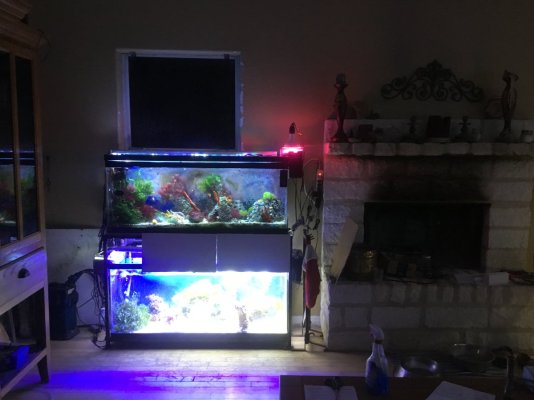
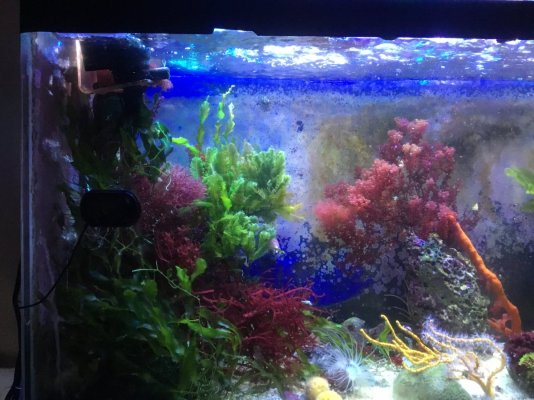
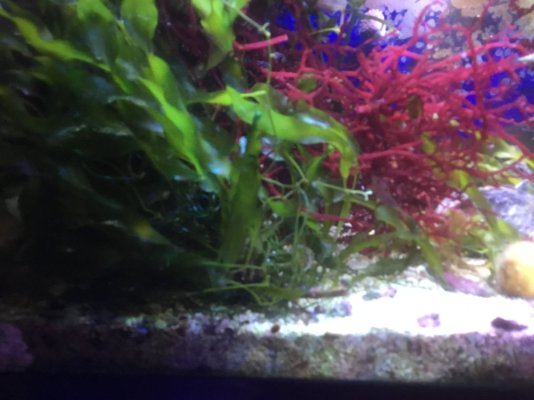
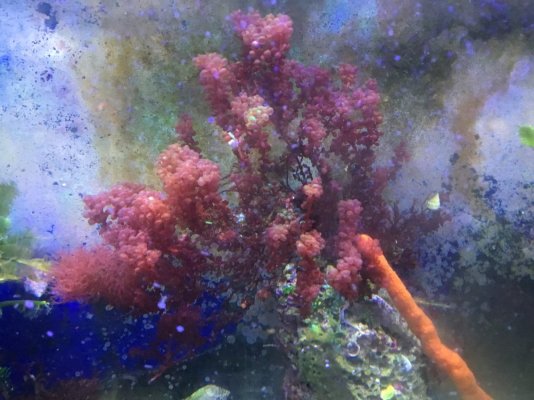
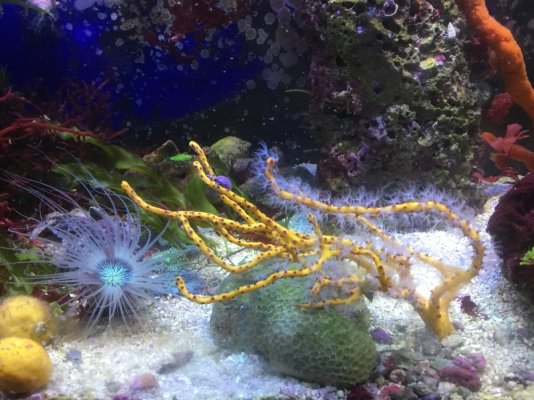
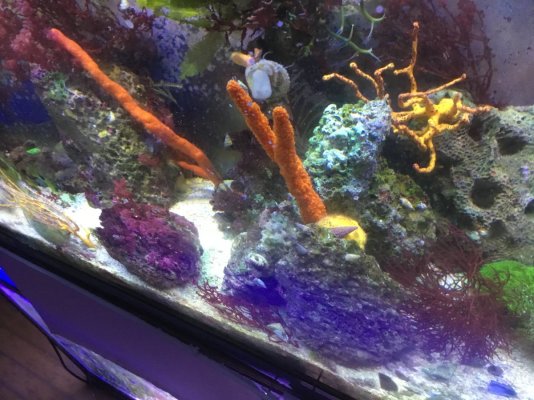
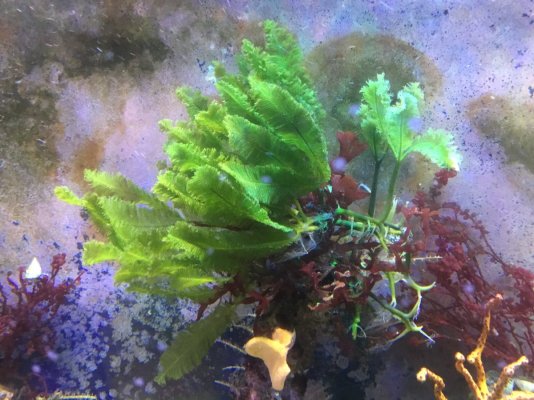
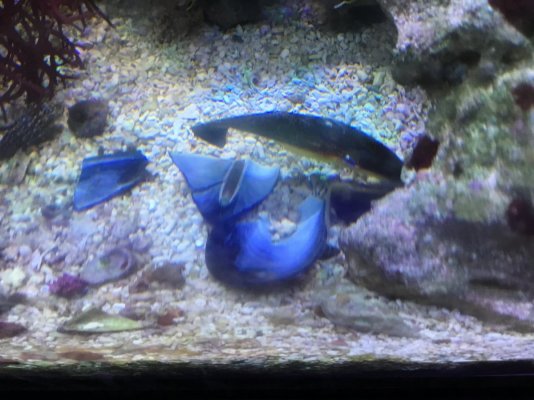
Because this is a thread about bacteria and management of bacteria using diverse filter feeders specific enzymes, I will use liquid seaweed (inorganic carbon & little nitrogen) to favor growth for everyone and compliment that with phytoplankton as an organic carbon source.
I will not clean inside glass during this thread discussion, when I went to clean inside glass prior to taking pictures, I saw too many amphipods & copepods that were doing the “two step”.
There are no fish in this tank, I choose to favor amphipods & copepods as my gardeners, I can see them better than the bacteria. I also have much green macro algae and several red macros. Included in this tank are a variety of ornamental sponges, with my most recent joy two deep water NPS Gorgonions. The flame scallop is hiding and healthy.
I should note, that I occasional dose 5ml of ammonia when lights come on.
Note the last picture of muscle shell on sand bottom. Twenty four hours ago, I took live mussel from refrigerator cracked his shell and dropped him into the tank.








Last edited:
sixty_reefer
5000 Club Member
View BadgesArticle Contributor
UK Reef Club Member
Hospitality Award
R2R Research
I believe Timfish is more versed on that area.@sixty_reefer
Lets talk bacteria that live inside of various filter feeders with special emphasis on cryptic sponges.
@Timfish, this is your speciality.
I have some first hand knowledge about carbon dosing used by bioflock shrimp farms. Seven years ago, while visiting Texas A&M Maraculture Research Facility at Flour Bluff. Professor Tzachi comented on the insistance of consultants throwing more carbon at shrimp, afterwhich he showed me raceways with massive gas exchange to support 10K pound harvest. Not until reading about the cryptic sponge loop did I realize that DIC produced by cryptic sponges is carbon dioxide. In effect carbon dioxide plus photosyntethis becomes glucose which is carbon.
Featured snippet from the web
Biofloc Management
The function of the biofloc is to reduce the nitrogenous metabolic waste (ammonia, nitrite) produced by shrimp feeding and production. Ammonia consumed by heterotrophic bacteria becomes protein, which can then be consumed by shrimp and converted into growth.
quote:
Biofloc Management
The function of the biofloc is to reduce the nitrogenous metabolic waste (ammonia, nitrite) produced by shrimp feeding and production. Ammonia consumed by heterotrophic bacteria becomes protein, which can then be consumed by shrimp and converted into growth.
there is conflict information on some biofloc papers as heterotrophic bacteria can’t use ammonia directly only reduce it in the environment by metabolising organic matter that produces ammonia.
I am currently trying to make the hole context more visual helpfully ready in a couple days.
- Joined
- Aug 24, 2016
- Messages
- 1,501
- Reaction score
- 2,295
Reef Actif is stable as long as it is kept dry, no expiry.I just looked under both of mine and I can only see a smudge of the best of date. My last one lasted me 6 months with no issues. Maybe someone from TM could chime in, being a dry carbohydrate I would imagine a fairly long shelf life at room temperature.
This is starting point on Reef Actif protocoal in 75G display tank set up for 25years with one move 11 years ago, system incudes a 30G cryptic & mud refugium and the beginning of nutrient recycling with detrivores in a 2” deep sandbed of aroggonite at 2-3mm in diameter. I will put daily post in my build thread, so as not to clog up the OP’s thread.
During lights out, I mixed 1.5g of dry weight powder (half of TM maximum recommended dose of Reef Actif) into 250ml cup of tank water, after mixing for 15 seconds, I poured all contents into high flow area of tank and rinsed out wet powder still in cup. All pictures were taken after first light on first day of modified biofock protocoal.
PS: First picture was prior to cleaning the glass. On third and fourth picture note the dark maroon spots on sandbed, that is an actively growing patch of Cynobactera.
The last picture shows two nuisances that are unnecessary in the diversity of this complex ecosystem and I will “Practice the Art of ReefKeeing“ with a syphon hose to waste.
In the Art of Reefing, everybody has a job.
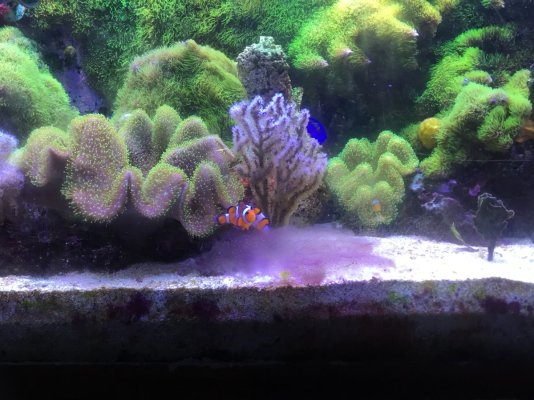
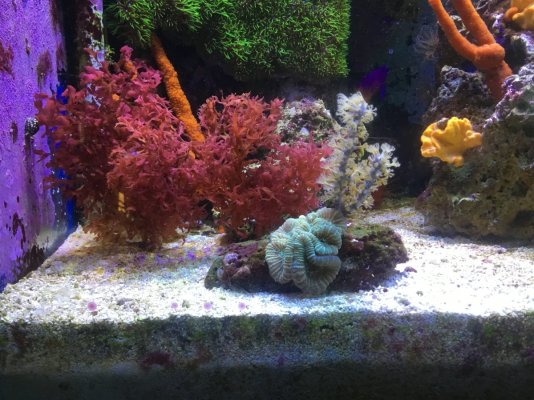
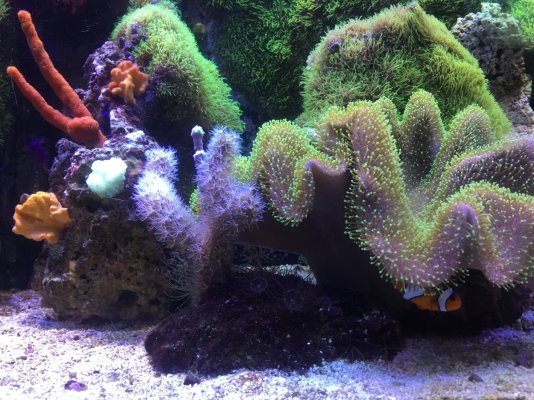
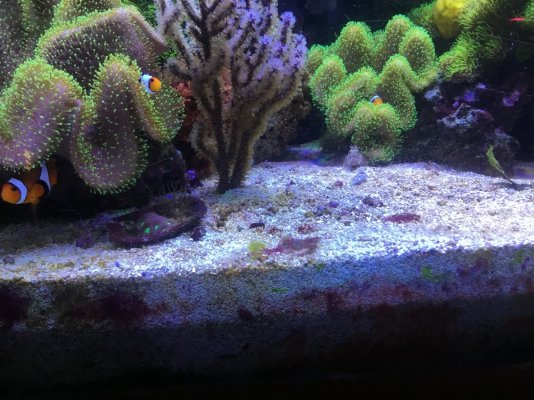
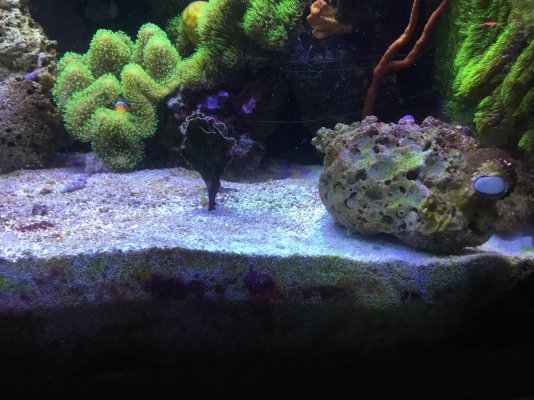
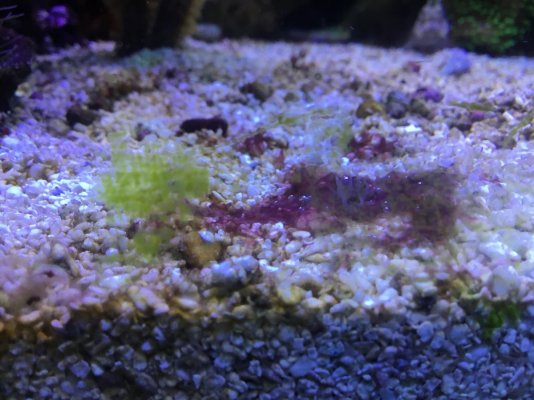
During lights out, I mixed 1.5g of dry weight powder (half of TM maximum recommended dose of Reef Actif) into 250ml cup of tank water, after mixing for 15 seconds, I poured all contents into high flow area of tank and rinsed out wet powder still in cup. All pictures were taken after first light on first day of modified biofock protocoal.
PS: First picture was prior to cleaning the glass. On third and fourth picture note the dark maroon spots on sandbed, that is an actively growing patch of Cynobactera.
The last picture shows two nuisances that are unnecessary in the diversity of this complex ecosystem and I will “Practice the Art of ReefKeeing“ with a syphon hose to waste.
In the Art of Reefing, everybody has a job.






Last edited:
The two I just got say exp.12/23What is shelf life and at what temperature is best for storage?
This brings up an interesting point raised on one of the last reef-beef episodes @Thales . So, if a food degrades, it doesn’t just disappear, does it ? Isn’t it just converted into bacterial mass with maybe a little loss due to energy conversion and CO2 production ? @Randy Holmes-Farley will put me straight, I’m sureThe two I just got say exp.12/23
Edit - I suppose a lot could be used up, not a little, lol.
Last edited:
sixty_reefer
5000 Club Member
View BadgesArticle Contributor
UK Reef Club Member
Hospitality Award
R2R Research
Thank you Hans, that’s what I had in mind although I couldn’t be sure.Reef Actif is stable as long as it is kept dry, no expiry.
sixty_reefer
5000 Club Member
View BadgesArticle Contributor
UK Reef Club Member
Hospitality Award
R2R Research
Please keep updating this pictures and any other observations you see whether they are positive or negative.This is starting point on Reef Actif protocoal in 75G display tank set up for 25years with one move 11 years ago, system incudes a 30G cryptic & mud refugium and the beginning of nutrient recycling with detrivores in a 2” deep sandbed of aroggonite at 2-3mm in diameter. I will put daily post in my build thread, so as not to clog up the OP’s thread.
During lights out, I mixed 1.5g of dry weight powder (half of TM maximum recommended dose of Reef Actif) into 250ml cup of tank water, after mixing for 15 seconds, I poured all contents into high flow area of tank and rinsed out wet powder still in cup. All pictures were taken after first light on first day of modified biofock protocoal.
PS: First picture was prior to cleaning the glass. On third and fourth picture note the dark maroon spots on sandbed, that is an actively growing patch of Cynobactera.
The last picture shows two nuisances that are unnecessary in the diversity of this complex ecosystem and I will “Practice the Art of ReefKeeing“ with a syphon hose to waste.
In the Art of Reefing, everybody has a job.






So 6 hrs into “lights on” small cyno mat & Aptasia were vacuumed to waste along with a few beneficial spaghetti worms. Other small patches, probably diatoms, were removed from base of live rock. Completed a 7 gallon gravel vacume to waste.This is starting point on Reef Actif protocoal in 75G display tank set up for 25years with one move 11 years ago, system incudes a 30G cryptic & mud refugium and the beginning of nutrient recycling with detrivores in a 2” deep sandbed of aroggonite at 2-3mm in diameter. I will put daily post in my build thread, so as not to clog up the OP’s thread.
During lights out, I mixed 1.5g of dry weight powder (half of TM maximum recommended dose of Reef Actif) into 250ml cup of tank water, after mixing for 15 seconds, I poured all contents into high flow area of tank and rinsed out wet powder still in cup. All pictures were taken after first light on first day of modified biofock protocoal.
PS: First picture was prior to cleaning the glass. On third and fourth picture note the dark maroon spots on sandbed, that is an actively growing patch of Cynobactera.
The last picture shows two nuisances that are unnecessary in the diversity of this complex ecosystem and I will “Practice the Art of ReefKeeing“ with a syphon hose to waste.
In the Art of Reefing, everybody has a job.






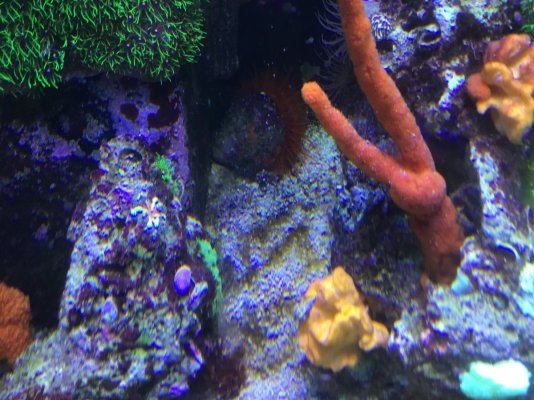
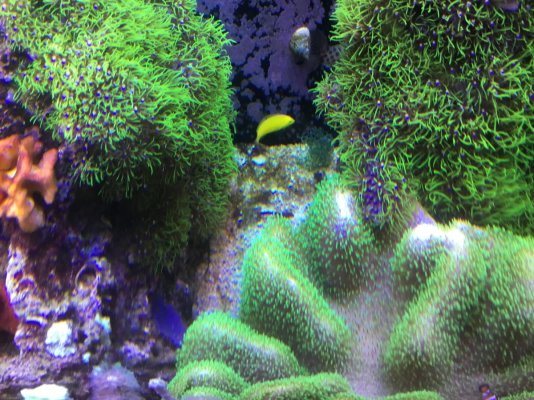
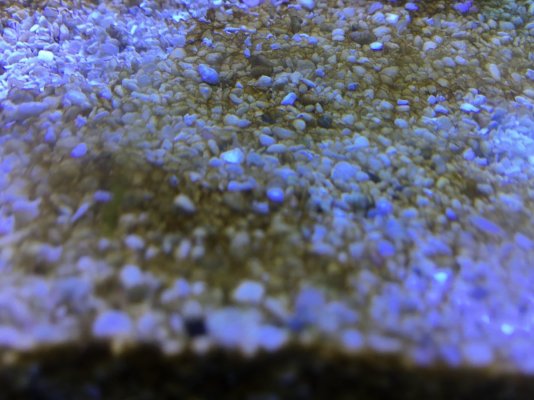
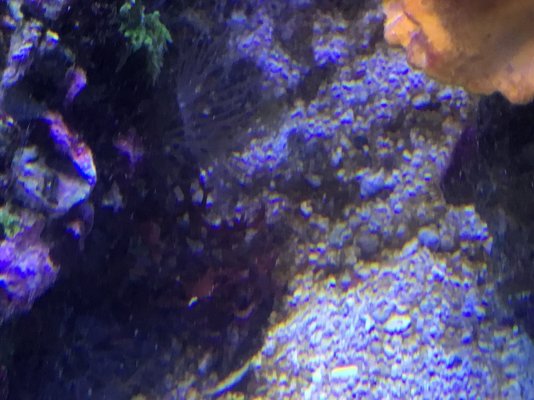
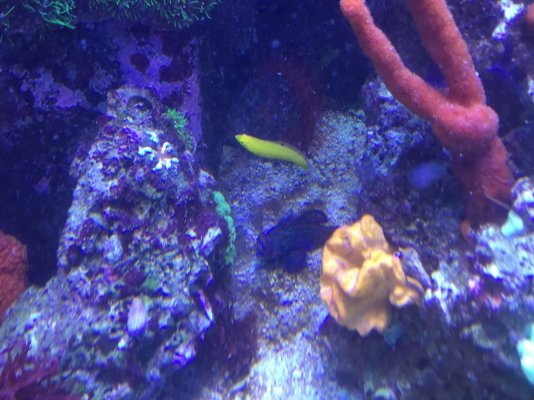
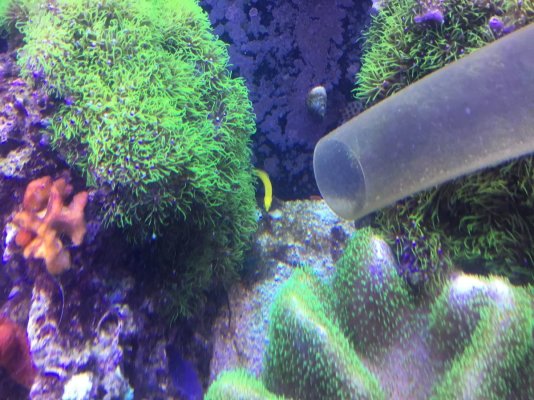
Last edited:
sixty_reefer
5000 Club Member
View BadgesArticle Contributor
UK Reef Club Member
Hospitality Award
R2R Research
For a few days since the thread got quite some unexpected response I have been thinking of ways to make the concept more visual to all understand the basics of a bacterial “rip clean”.
last night I set 2 experiments to try and demonstrate it visually.
experiment 1
Decomposition of a shrimp in a small vessel
• Duration 18 hours
• 5 grams defrosted cooked shrimp
• 100 ml tank water collected just after dosing reef actif
Results:
• Shrimp weigh 5 grams
• ammonia 0 ppm
• nitrite above 1 ppm
• nitrates 220 ppm plus (system runs at 15ppm
comments:
There was no weight loss, visually the shrimp still looked fresh, there was a cloudiness of the water in the vessel although ammonia was 0 ppm.
I was hoping to have an ammonia reading to illustrate this part of the test that would show the results of slow decomposition is ammonia. It seems that somehow the carbon source transformed all the ammonia to nitrite. It’s a small vessel and so many tings can go wrong I will hope that @Lasse could chime in as he’s the most versed person I know in bacteria knowledge.
pictures and videos experiment 1
0 hours beginning of experiment

18 hours end of experiment

18 hours end of experiment

18 hours ammonia 0 ppm

18 hours nitrite 1ppm plus

nitrates at 18 hours 220 plus (system nitrate 15ppm)

18 hours video experiment 1
 youtube.com
youtube.com
Experiment 2
Decomposition of a shrimp in a reef tank
• Duration 18 hours
• 6 grams defrosted cooked shrimp
• 25 gallons reef tank (currently at full dose of actif)
results:
• shrimp weight 3 grams (lost 3 grams)
comments:
The shrimp was left on a corner of the system for 18 hours, today at the end of the experiment the shrimp had obvious signs of advanced decomposition (see pics and video) and it lost 3 grams in weight
pictures and videos experiment 2
0 hours before it was added to the sys

18 hours after being added to the system

shrimp in the system 18 hours (before being removed for weight check

video of 18 hours texture and composition
 youtube.com
youtube.com
the test only had a duration of 18 hours due to the advanced decomposition, if I were to leave it for longer I would be able to remove the shrimp from my system for observation.
Also note that this shrimp would be the equivalent to a small fish or around 4 to 6 cubes of frozen brine decomposing in a system
last night I set 2 experiments to try and demonstrate it visually.
experiment 1
Decomposition of a shrimp in a small vessel
• Duration 18 hours
• 5 grams defrosted cooked shrimp
• 100 ml tank water collected just after dosing reef actif
Results:
• Shrimp weigh 5 grams
• ammonia 0 ppm
• nitrite above 1 ppm
• nitrates 220 ppm plus (system runs at 15ppm
comments:
There was no weight loss, visually the shrimp still looked fresh, there was a cloudiness of the water in the vessel although ammonia was 0 ppm.
I was hoping to have an ammonia reading to illustrate this part of the test that would show the results of slow decomposition is ammonia. It seems that somehow the carbon source transformed all the ammonia to nitrite. It’s a small vessel and so many tings can go wrong I will hope that @Lasse could chime in as he’s the most versed person I know in bacteria knowledge.
pictures and videos experiment 1
0 hours beginning of experiment
18 hours end of experiment
18 hours end of experiment
18 hours ammonia 0 ppm
18 hours nitrite 1ppm plus
nitrates at 18 hours 220 plus (system nitrate 15ppm)
18 hours video experiment 1
- YouTube
Enjoy the videos and music you love, upload original content, and share it all with friends, family, and the world on YouTube.
Experiment 2
Decomposition of a shrimp in a reef tank
• Duration 18 hours
• 6 grams defrosted cooked shrimp
• 25 gallons reef tank (currently at full dose of actif)
results:
• shrimp weight 3 grams (lost 3 grams)
comments:
The shrimp was left on a corner of the system for 18 hours, today at the end of the experiment the shrimp had obvious signs of advanced decomposition (see pics and video) and it lost 3 grams in weight
pictures and videos experiment 2
0 hours before it was added to the sys
18 hours after being added to the system
shrimp in the system 18 hours (before being removed for weight check
video of 18 hours texture and composition
- YouTube
Enjoy the videos and music you love, upload original content, and share it all with friends, family, and the world on YouTube.
the test only had a duration of 18 hours due to the advanced decomposition, if I were to leave it for longer I would be able to remove the shrimp from my system for observation.
Also note that this shrimp would be the equivalent to a small fish or around 4 to 6 cubes of frozen brine decomposing in a system
Last edited:
sixty_reefer
5000 Club Member
View BadgesArticle Contributor
UK Reef Club Member
Hospitality Award
R2R Research
@brandon429 the above should bring some information on why we shouldn’t always take useful interpretation on biological testing in small volumes of water and the reason that the test you share earlier from taricha may have seemed that bacteria wasn’t working as it should.
its not a seneye, you can't see the ammonia effects you want with that cheap test kit. darn good setup idea though
not any degree of ammonia inference nor bacterial inference can be had with those nondigital test kits
if you had hanna digital nitrite, perhaps/seneye, I bet it would show us something. too many leaps must be made now to draw anything from that test above but the idea was solid good idea in my opinion to position the actions of the Actif
I've seen full running reefs post that much nitrite before in the chem forum, with perfect tank pics on a years old setup/whatever non digital test kits say means nothing/I'm not being mean I'm simply recalling the 450,000 pages of google search returns for 'stuck reef tank cycle' contrasted to the tank pics in each post of fully happy fish, clear water, open corals, normal running reef tank not in bacterial distress. non digital test kits caused all that misread madness combined with old cycling science rules telling reefers if ammonia isn't bone zero the cycle is broken or stalled.
not any degree of ammonia inference nor bacterial inference can be had with those nondigital test kits
if you had hanna digital nitrite, perhaps/seneye, I bet it would show us something. too many leaps must be made now to draw anything from that test above but the idea was solid good idea in my opinion to position the actions of the Actif
I've seen full running reefs post that much nitrite before in the chem forum, with perfect tank pics on a years old setup/whatever non digital test kits say means nothing/I'm not being mean I'm simply recalling the 450,000 pages of google search returns for 'stuck reef tank cycle' contrasted to the tank pics in each post of fully happy fish, clear water, open corals, normal running reef tank not in bacterial distress. non digital test kits caused all that misread madness combined with old cycling science rules telling reefers if ammonia isn't bone zero the cycle is broken or stalled.
Last edited:
sixty_reefer
5000 Club Member
View BadgesArticle Contributor
UK Reef Club Member
Hospitality Award
R2R Research
Don’t need a soneye wend all the ammonia is in the form of No2 (nitrite)its not a seneye, you can't see the ammonia effects you want with that cheap test kit. darn good setup idea though
Similar threads
- Replies
- 2
- Views
- 66

















